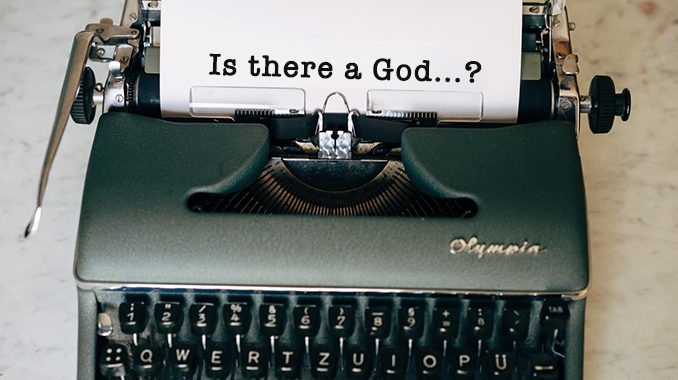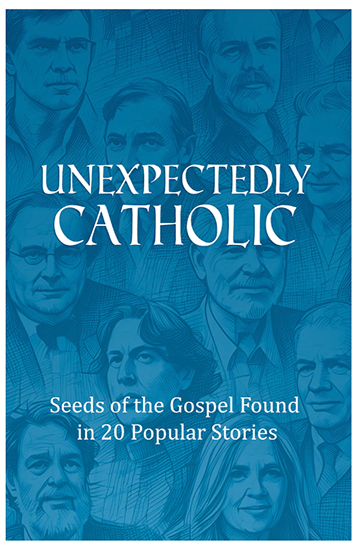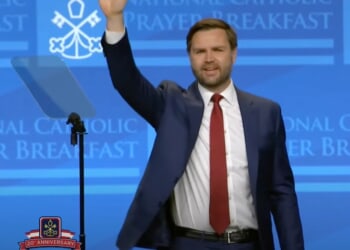
Markus Winkler/Unsplash.com; photo illustration: CWR staff)
The worlds of Catholic theology and philosophy can, at times, feel overwhelmingly vast. One could spend an entire lifetime studying just one or two thinkers, never mind the whole panoply of brilliance across two thousand years of tradition.
But the “Catholic imagination” in storytelling is also daunting in its own way—not so much because of its length (the seventeenth-century Don Quixote traditionally being recognized as the first novel in the West) but because of its width. Many Catholics, of course, have written powerful stories with deeply Catholic themes and perspectives.
But many non-Catholics and lapsed Catholics—sometimes despite or even unbeknownst to themselves—have done the same. There are “seeds of the Word” all over our stories.
Voyage Comics & Publishing, which has a special focus on graphic novels, has offered a helpful contribution to this literary tradition with Unexpectedly Catholic: Seeds of the Gospel in 20 Popular Stories. Edited by Mike Schramm, this collection draws together a series of vignettes by various contributors, each offering a case study in Catholic storytelling.
“A Catholic imagination is able to see,” Schramm writes in the opening chapter, “because one has already spent time contemplating it in themselves, the truths of the faith that lie hidden in the material world. These truths lie closer to us than we are to ourselves because they participate more deeply in the nature of God, who is Being itself. These truths are what this book seeks to highlight.”
The book doesn’t give a comprehensive analysis of any of the twenty writers—the glimpses are quite brief—but it’s a useful lead to discover a new writer or a new book one hadn’t heard of before.
The next part of the book, Schramm explains, titled “Seeds in Their Words,” looks at “authors who either never became Catholic in this life or were perhaps raised Catholic but either lapsed or rejected it in adulthood.”
Among these we find some familiar names including George MacDonald and Bram Stoker, but also some lesser-known writers like Robert E. Howard (creator of Conan the Barbarian), presented by Thomas Salerno (The Riddle of the Tongue-Stones). Howard’s fantasy stories have been hailed by some as “second only to J. R. R. Tolkien’s Lord of the Rings saga…” As Salerno explains, despite an ambiguous or even nonexistent religious background—and even a suspicion of “plotting priest-craft” that gave him a curious disdain for the prophet Samuel and an equally curious admiration for King Saul—they were “often steeped in biblical imagery and themes.” (Howard, like Walter M. Miller Jr.—a Catholic author covered in the latter section of the book, again by Salerno—sadly took his own life, a subject Salerno broaches with great sensitivity and hope, drawing on the Catechism of the Catholic Church.)
We’re also given fascinating insights into some of the better-known non-Catholic authors.
Robert Louis Stevenson (Treasure Island and Dr Jekyll and Mr Hyde), John Tuttle explains, had an interesting devotion to his contemporary, Damien of Molokai: he visited the Hawaiian island after the priest’s death, and anticipated “the day when Damien of Molokai shall be named a Saint.”
Michael Bertrand’s essay on Philip K. Dick highlights the troubled writer’s religious turn in the 1960s, when his family was baptized into the Episcopal Church and religious themes permeated his work. Bertrand also gives us an interesting autobiographical look at his own Episcopal ordination, fueled by his love for the writer: “PKD’s connections with the Episcopal Church inspired me to see the process through. If Philip K. Dick could be a faithful Episcopalian, then so could I.” Bertrand, however, came to see that both the man and his faith were unhealthy: “Over time, I distanced myself from his views, and then in the end, left him and the Episcopal Church in favor of authentic Catholicism.” Perhaps Dick, had he lived longer, would have done the same.
The latter part of the book pivots to Catholic writers, and again, some of the names will be familiar to many readers: Walker Percy (Lost in the Cosmos), George Bernanos (Diary of a Country Priest), and Shūsaku Endō (Silence), among others. But this section also offers some fine surprises—at least, it did for me. We read that Oscar Wilde wrote a series of fairy tales with deeply moral and religious themes, like “The Selfish Giant”, and that Suzanne Collins, the author of The Hunger Games, still identifies (at least, based on the available evidence) as Catholic.
Also, that philosopher Ralph McInerny wrote a wildly popular novel in the wake of Vatican II called The Priest, which sold over a million copies. Julian Sicam offers us this wonderful quote from McInerny’s I Alone Have Escaped to Tell You about his writing process and outlook:
In the basement was my workbench, unlikely to serve its original purpose for me. It became my desk. It was L-shaped. I plunked my typewriter on the short leg of the L and, standing, began. Every night, after we had put the kids to bed and spent some time together, I would go downstairs and write from ten until about two in the morning. . . . Writing is too often described as self-expression. But writing is the art of making a story that will engage and hold and satisfy the interest of the reader. Lint from one’s navel seldom has this effect. I typed a slogan and pinned it over my typewriter. Nobody Owes You a Reading.
Such is the dedication to the craft of writing that emerges, time and again, in these pages, both with Catholic and non-Catholic authors. And in both cases, that quest to see reality as it truly is—which, as Flannery O’Connor was at pains to emphasize in her essays, is the vocation of the fiction writer—inevitably leads one to the great themes of religion and their convergence on, and perfection in, the revelation of Christ.
If you value the news and views Catholic World Report provides, please consider donating to support our efforts. Your contribution will help us continue to make CWR available to all readers worldwide for free, without a subscription. Thank you for your generosity!
Click here for more information on donating to CWR. Click here to sign up for our newsletter.








